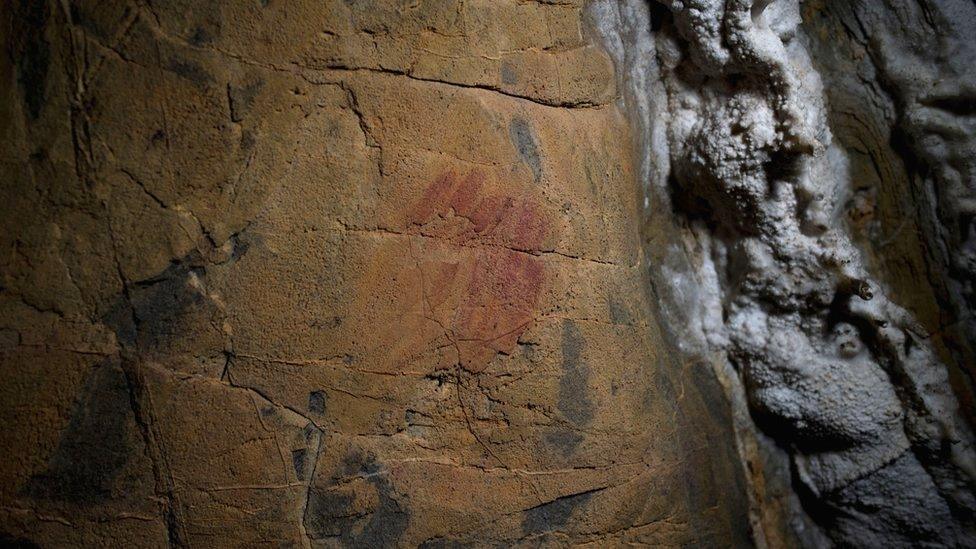Spanish cave markings near Malaga believed to be Neanderthal art
- Published
- comments

Some of the red pigments are believed to have been created by Neanderthals about 65,000 years ago
A study of marks in a cave in Spain called The Cueva de Ardales has made an exciting discovery - artwork by Neanderthals.
Until recently the markings - which are around 65,000 years old - were believed to have happened naturally.
Neanderthals are our ancient relatives, but they were a distinct species called Homo neanderthalensis.
They were stocky with strong arms and hands, with large skulls with sloping foreheads and no chin.
They became extinct 40,000 years ago.
But now it has been revealed that the staining in the caves could only have been achieved by splattering and blowing.
The study, published in the journal PNAS, says the red pigments discovered in three caves near Malaga are a form of Neanderthal cave art.
How were the paintings discovered?
The markings on three caves in Spain did not occur naturally, scientists say
The paintings were first discovered back in 1812 after a concealed entrance was exposed following an earthquake.
This new research also shows the pigment was applied at different times, sometimes more than 10,000 years apart - suggesting many generations of Neanderthals returned over time to make the symbolic markings.
Researchers say the latest discovery adds to evidence that our evolutionary cousins were more intelligent than we might have previously believed
- Published9 October 2014
- Published12 December 2019
